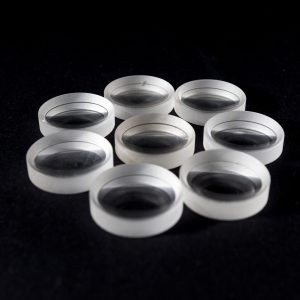When wearing glasses, we often need to combine various factors to choose glasses. Spherical and aspherical surfaces are one of the parameters. So what’s the difference between these two lenses? Which one has more advantages? Let’s take a look:
What is a spherical lens?
Both sides of a spherical lens are spherical, and the surface curvature of each surface is uniform, with the same radius of curvature. The processing equipment is simple, inexpensive, and the lens is thick, with aberrations, which can cause significant image blurring, deformation of the surrounding area of the object, and narrow vision.
What is an aspherical lens?
As the name implies, an aspherical surface is not a spherical surface. Geometrically speaking, there is no uniform spherical radius. The refractive force is called the radius of curvature. The design of aspherical lenses so far refers to the constant variation of refractive power from the optical center region to the edge region, with a parabolic curve, which determines that the luminosity of such lenses gradually decreases from the optical center to the peripheral region.
Advantages of aspherical lenses:
In traditional spherical lenses, the distortion of objects seen around the lens limits the wearer’s field of vision. The aspherical design reduces the edge aberration of the lens to a low level, resulting in a wider field of vision. Aspheric lenses have a flatter base curve, lighter weight, and a more natural and beautiful appearance. In the case of high diopter, it can reduce the deformation of glasses. For consumers with higher vision, it may be more appropriate to choose aspherical lenses.
The surface radian of an aspherical lens is designed with an aspherical surface. Compared to designing a spherical lens, this design has the following advantages:
1. Clear
Aspheric lenses treated with a special coating have a perfect visual effect and present a clearer and more comfortable visual effect.
2. Lightweight
The lens is light in weight and thin in thickness, making it almost imperceptible to wear aspherical lenses.
3. Nature
Aspheric design is more natural, with less visual deformation, and more realistic viewing.
Suitable population for aspherical lenses:
① Large quantity and high astigmatism;
② Anisometropia;
③ presbyopia;
④ Sports enthusiasts;
⑤ Those who have just come into contact with glasses;
⑥ People who focus on peripheral vision;
⑦ Those who pay great attention to appearance;
⑧ Large frame glasses wearer;
⑨ Alternate wearers of contact lenses and frame glasses.




